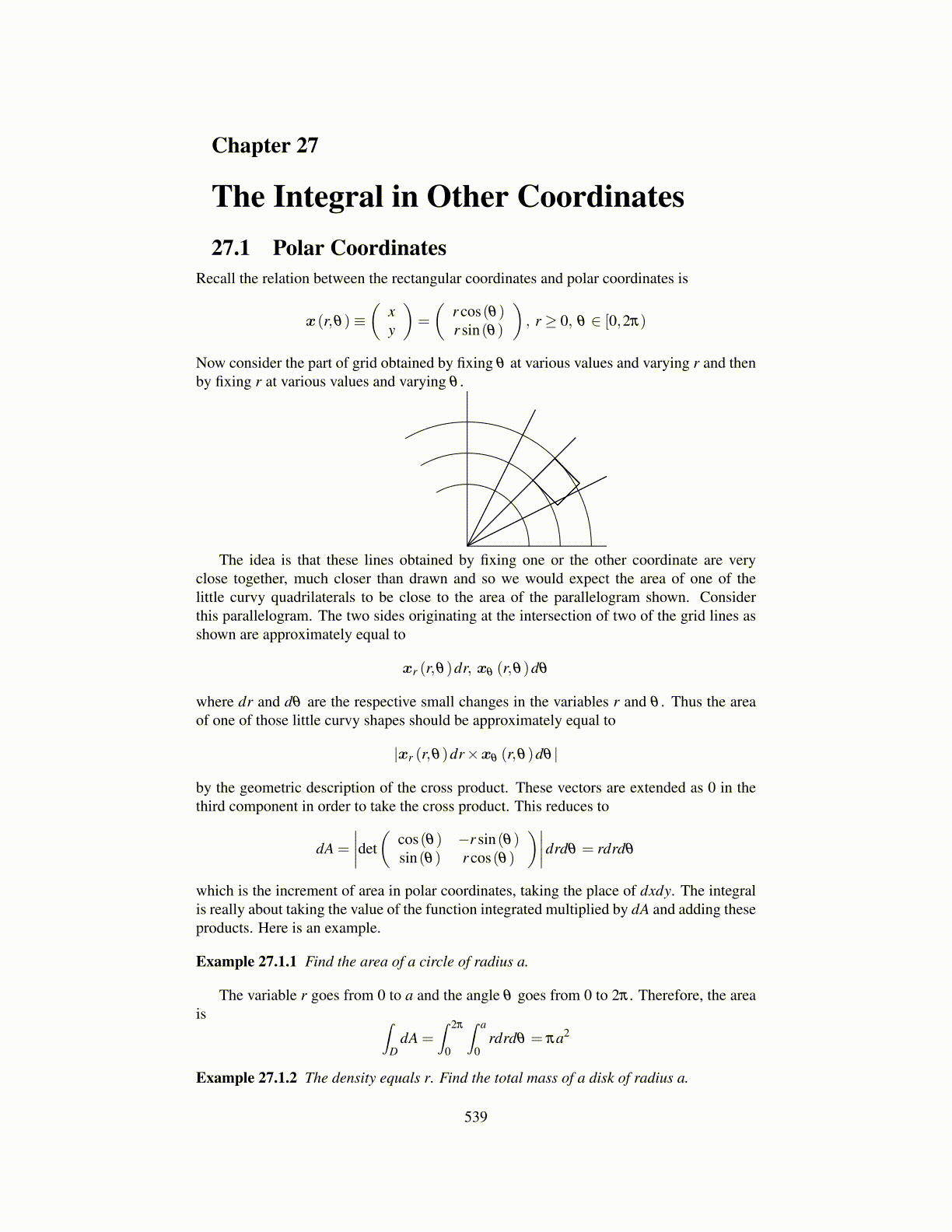
27.3. CYLINDRICAL AND SPHERICAL COORDINATES 539
27.3.1 Volume and Integrals in Cylindrical CoordinatesThe increment of three dimensional volume in cylindrical coordinates is dV = rdrdθdz.It is just a chunk of two dimensional area rdrdθ times the height dz which gives threedimensional volume. Here is an example.
Example 27.3.1 Find the volume of the three dimensional region between the graphs ofz = 4−2y2 and z = 4x2 +2y2.
Where do the two surfaces intersect? This happens when 4x2 +2y2 = 4−2y2 which isthe curve in the xy plane, x2 +y2 = 1. Thus (x,y) is on the inside of this circle while z goesfrom 4x2 +2y2 to 4−2y2. Denoting the unit disk by D, the desired integral is∫
D
∫ 4−2y2
4x2+2y2dzdA
I will use the dA which corresponds to polar coordinates so this will then be in cylindricalcoordinates. Thus the above equals∫ 2π
0
∫ 1
0
∫ 4−2(r2 sin2(θ))
4(r2 cos2(θ))+2(r2 sin2(θ))dzrdrdθ = 2π
Note this is really not much different than simply using polar coordinates to integrate thedifference of the two values of z This is∫
D4−2y2 −
(4x2 +2y2)dA =
∫D
(4−4r2)dA
=∫ 2π
0
∫ 1
0
(4−4r2)rdrdθ = 2π
Here is another example.
Example 27.3.2 Find the volume of the three dimensional region between the graphs ofz = 0,z =
√x2 + y2, and the cylinder (x−1)2 + y2 = 1.
Consider the cylinder. It reduces to r2 = 2r cosθ or more simply r = 2cosθ . This isthe graph of a circle having radius 1 and centered at (1,0). Therefore, θ ∈ [−π/2,π/2]. Itfollows that the cylindrical coordinate description of this volume is∫
π/2
−π/2
∫ 2cosθ
0
∫ r
0dzrdrdθ =
329